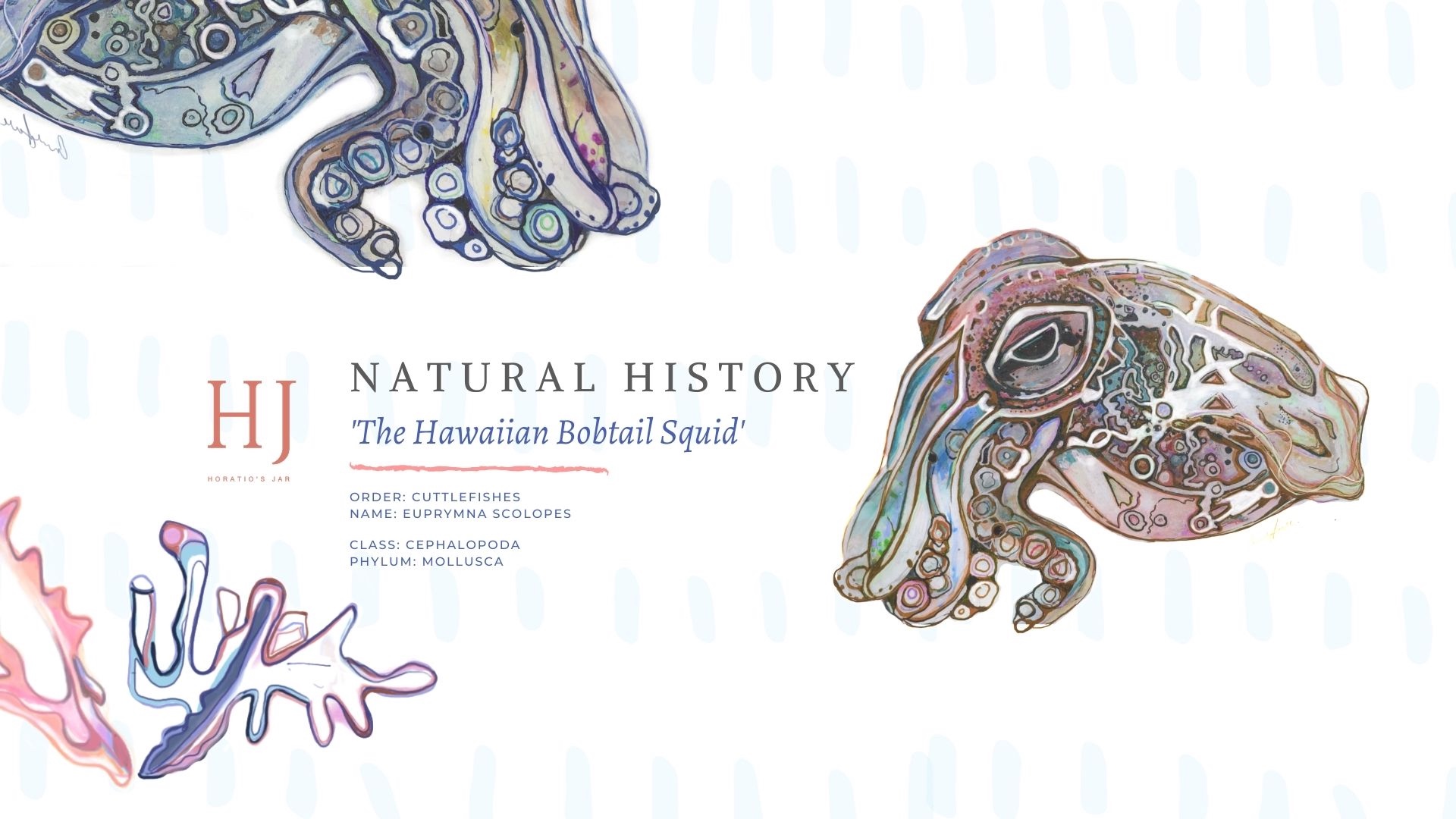Published by: Digital Schools
The Hawaiian Bobtail Squid
A full moon illuminates the surface of the warm waters off the Hawaiian coastline. Bobbing just beneath the silvery light spray is a dumpling shaped squid that can hide in the light of the moon.
Glowing from the inside, The Hawaiian Bobtail Squid (Euprymna scolopes) is a cephalopod with super-powers. Cute and sparkly with big eyes, a plump body, a skirt of fins and a fist of tentacles exploding from its face, this little squid, not much bigger than a lime, is like no other.
Just as octopus and other varieties of squid have evolved incredible ways to avoid being eaten; like shapeshifting, colour changing, ink explosions and travelling at warp speed using jet propulsion – The Hawaiian Bobtail with its eight arms and two tentacles, big eyes, and colour changing skin has its own unique ways of fooling its foes. Unlike its soft-bodied relatives, which use iridophores to mimic sunlight to camouflage on the surface or the water, the Bobtail Squid emits its own light from inside of itself.

The Hawaiian Bobtail Squid has been dubbed “the stealth bomber of the ocean”, by molecular biologist Bonnie Bassler, AKA The Bacteria Whisperer.
https://youtu.be/TVfmUfr8VPA – Bonnie Bassler: The secret, social lives of bacteria

The Stealth Bomber
The Hawaiian Bobtail Squid spends most of the time hidden underneath sand on the bottom of the seafloor, but come night-time the googly-eyed squid switches on its invisibility device and floats to the surface of the warm Hawaiian waters to hunt. The dumpling shaped disco-ball that glows like the moon, is invisible to hungry predators below and it’s all thanks to a single microbe that lives inside its body.
Out of the billions of bacteria and viruses that exist in every litre of seawater, only one inhabits the Bobtail Squids body. A light-emitting microbe called Vibrio fisceri which colonises inside the squid and helps grow a special light organ that the Bobtail uses to control the amount of light released from inside of itself. This symbiotic relationship has captured the attention of biologists who are curious to understand how microbes change the host they inhabit.
Studying the relationship of Vibrio fisceri and its host the Hawaiian Bobtail Squid has revealed to scientists the secret language that microbes use to communicate. It means we could harness the power of good bacteria to enhance our own bodies and perhaps one day consciously interact with our microbial buddies. Who knows, maybe one day we will figure out how to glow at night too.

——-
PUBLISHER’S DISCLAIMER: The publisher of this blog post (Digital Schools PTY LTD) works in partnership with the school as a 3rd party provider to help build and maintain the school website. Digital Schools sources a range of experts who provide products and/or services to educational institutions and we work with them to produce and publish topical information in the form of blog posts that we think may be relevant, interesting or topical to families within the community. The views, opinions and content listed in this blog post are that of the guest contributor and/or publisher (Digital Schools). It should be noted that whilst the publisher and guest contributors are acting with the best intentions and in the best interests of the school and their community to provide helpful or interesting information, sometimes the content may not necessarily reflect the views of the school.
The information in this blog post is not meant to be used, nor should it be used, to diagnose or treat any medical condition. For diagnosis or treatment of any medical problem, consult your own physician. The school and the publisher of this blog post are not responsible for any person reading or following the information in this article who may experience adverse effects.
Any references to external websites or sources are provided for informational purposes only and do not constitute endorsement by the school or publisher in any way and the publisher and/or school cannot guarantee accuracy of information listed.
If you have feedback on any content on this platform, you can submit it to the publisher using the feedback link provided at the bottom of this page.


